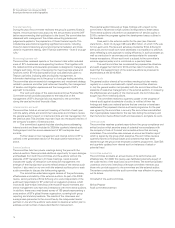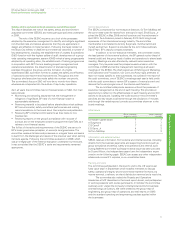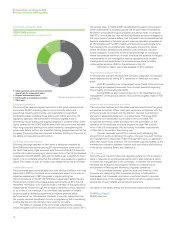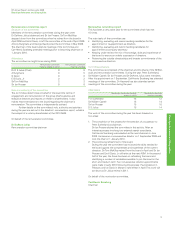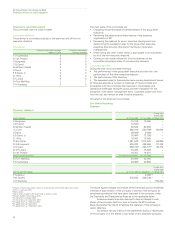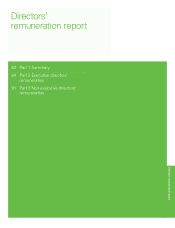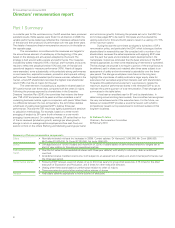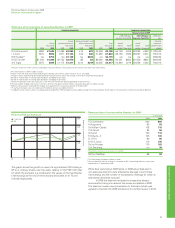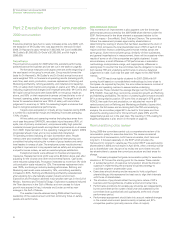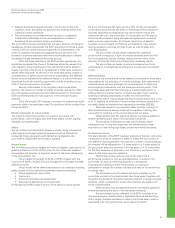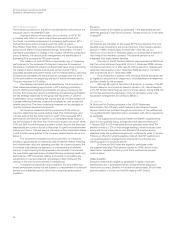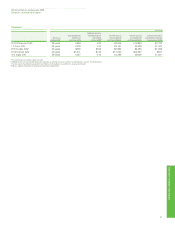BP 2009 Annual Report Download - page 79
Download and view the complete annual report
Please find page 79 of the 2009 BP annual report below. You can navigate through the pages in the report by either clicking on the pages listed below, or by using the keyword search tool below to find specific information within the annual report.
BP Annual Report and Accounts 2009
Board performance and biographies
Board performance and biographies
Safety, ethics and environment assurance committee report
This report describes the role of the safety, ethics and environment
assurance committee (SEEAC) and notes particular activities undertaken
in 2009.
The role of the SEEAC requires us to look at the processes
adopted by the executive management to identify and mitigate significant
non-financial risks and receive assurance that they are appropriate in
design and effective in implementation. Following the tragic incident at
the Texas City refinery in 2005 the committee has observed a number of
key developments, including: the establishment of a safety & operations
(S&O) function with the highest calibre of staff; development of a group-
wide operating management system (OMS) which is being progressively
adopted by all operating sites; the establishment of training programmes
in conjunction with MIT that are teaching project management and
operational excellence; the dissemination of standard engineering
practices throughout the group; and the formation of a highly
experienced S&O audit team formed to assess the safety and efficiency
of operations and recommend improvements. Throughout this time
the group chief executive has made safety the number one priority.
The committee’s focus in S&O will now be to monitor how these
advances are interpreted into the culture of day-to-day operations.
As in all years the committee has not focused solely on S&O. Our main
tasks include:
• Monitoring and obtaining assurance that the management or
mitigation of significant BP risks of a non-financial nature is
appropriately addressed.
• Reviewing material to be placed before shareholders which address
BP’s environmental, safety and ethical performance and making
recommendations to the board about their adoption and publication.
• Reviewing BP’s internal control systems as they relate to non-
financial risk.
• Reviewing reports on the group’s compliance with its code of
conduct and on the employee concerns programme (OpenTalk) as it
relates to non-financial issues.
The full list of the tasks and requirements of the SEEAC are set out in
BP’s board governance principles, at www.bp.com/governance. The
committee reviews its tasks and processes on a regular basis and seeks
to learn from the challenges and issues of the previous year when setting
its future agenda. Following the committee evaluation in 2009, which
was an integral part of the external evaluation undertaken by the board,
it was concluded that the SEEAC’s tasks and requirements remained
appropriate.
Committee structure
The SEEAC comprises four non-executive directors. Sir Tom McKillop left
the committee when he retired from the board in April. Erroll Davis, Jr
joined the SEEAC in May 2009 and will continue until his retirement in
April 2010. Paul Anderson joined in February 2010. Both bring broad
experience of the international energy industry. The committee
membership is completed by Antony Burgmans, Cynthia Carroll and
myself as chairman. Support is provided by the committee secretary,
David Pearl, BP’s deputy company secretary.
In addition to its non-executive members, the committee invites
the lead partner of the external auditors, the BP general auditor (head of
internal audit) and the group head of safety and operations to attend each
meeting. Meetings are also attended by relevant senior executive
managers. Tony Hayward was the principal executive liaison with the
committee in 2009 and led the management reporting at all seven
meetings of the SEEAC. The chief executives of Refining and Marketing,
and Exploration and Production, Iain Conn and Andy Inglis, attended to
report on topics specific to their businesses. As outlined in the report of
the audit committee, one of SEEAC’s meetings each year is held jointly
with the audit committee to review BP’s system of internal control and
discuss the forward programme of the internal audit function.
The committee holds private sessions without the presence of
executive management at the end of each meeting. This provides an
opportunity to reflect on the effectiveness of each meeting and confirm
actions to be pursued. Updating the wider board on the committee’s
activities and key issues is achieved through the circulation of minutes
and through the verbal reports I provide as committee chairman to the
board meetings.
Attendance
SEEAC meetings SEEAC meetings
eligible to attend attended
Sir William Castell (chair) 7 7
A Burgmans 7 7
C B Carroll 7 5
E B Davis, Jr 4 3
Sir Tom McKillop 3 3
Information and external advice
SEEAC receives information from external and internal sources, including
directly from the business segments and supporting functions such as
group compliance and ethics, safety and operations and internal audit.
During 2009 the committee’s principal external input has been provided
by Duane Wilson, the independent expert (see the Independent expert
section on the following page). SEEAC can access any other independent
advice and counsel if it requires, on an unrestricted basis.
Training and visits
The committee participated in the board’s visit to the US west coast
fuels value chain in September which enabled members to discuss
safety, operational integrity and environmental matters first hand at a
marine terminal, a refinery, an inland distribution terminal and a retail site.
The committee also visited the Projects and Operations
Academies at MIT (described in the board report above), and participated
in working sessions with course participants. In October the committee
secretary and I visited the company’s international centre for business
and technology at Sunbury. We were briefed by the group head of
engineering and group head of operations and their teams on OMS
and the standard operating and engineering practices applied within
the businesses.
77











